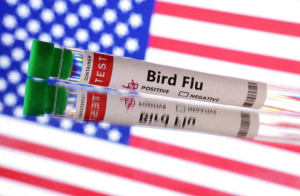United States: A recent investigative report by the Silent Spring Institute has unveiled a disconcerting reality: nearly one-third of the US populace may be consuming water tainted with contaminants that remain outside the purview of federal safety regulations.
These deleterious substances, excluded from existing oversight frameworks, pose significant health risks, disproportionately affecting marginalized populations.
Widespread Contamination Unmasked
Through meticulous analysis of data compiled by the US Environmental Protection Agency (EPA) between 2013 and 2015, researchers scrutinized 4,815 public water systems nationwide. Their findings are staggering: approximately 27 percent of these systems—catering to nearly 97 million individuals—contained traceable levels of at least one unregulated contaminant, as per Earth.com.
While federal mandates compel public water systems to monitor close to 100 predefined pollutants, thousands of other chemical agents evade regulation under the Safe Drinking Water Act. These unregulated substances often infiltrate groundwater and surface water, eventually finding their way to consumers’ taps.
Laurel Schaider, a distinguished scientist at the Silent Spring Institute, succinctly articulated the gravity of the situation, “Thousands of harmful chemicals bypass regulatory scrutiny, entering our water sources and jeopardizing public health.”
A Closer Look at the Culprits
Among the myriad toxins identified, four substances stand out for their pernicious effects:
- 1,4-Dioxane: A solvent categorized as a probable carcinogen, also prevalent in commonplace consumer items.
- PFAS (Per- and Polyfluoroalkyl Substances): Ubiquitous in non-stick cookware and water-resistant fabrics, these compounds are linked to cancer, endocrine disruption, and other ailments.
- Chlorodifluoromethane (Freon 22): Once integral to refrigeration and manufacturing, this chemical persists in older industrial sites.
- 1,1-Dichloroethane: Frequently utilized in producing paints and pesticides, this compound bears associations with carcinogenic outcomes.
Despite their potential danger, these chemicals remain largely unmonitored, allowing their concentrations to escalate unnoticed, according to Earth.com.
Environmental Injustice Amplified
The study underscores the pronounced disparity in exposure levels experienced by Hispanic and Black communities. Residents in these areas often live in proximity to pollution-emitting establishments such as factories, treatment plants, and military installations.
Aaron Maruzzo, the study’s principal investigator, emphasized the systemic nature of these inequities, “Communities with higher percentages of Hispanic and Black residents are persistently subjected to inferior water quality. This pattern is rooted in historical injustices, including redlining and discriminatory zoning practices.”
Income levels alone fail to account for these discrepancies, pointing instead to entrenched societal inequities, as reported by Earth.com.
The Growing Menace of PFAS
Emerging evidence suggests that PFAS contamination is even more pervasive than earlier estimates. The current study’s data, drawn from older samples, likely underrepresents the true scale of exposure. Recent testing has revealed that an even larger swath of the population may be affected.
In April 2024, the EPA enacted updated standards for six specific PFAS chemicals. While this marks progress, the report emphasizes the urgent need for broader regulatory measures to encompass a wider array of hazardous contaminants.
Charting a Path Toward Equitable Water Safety
By publicizing their extensive database of unregulated contaminants, the researchers aim to arm policymakers with actionable insights. This resource could serve as a cornerstone for devising more robust strategies to prevent and mitigate waterborne pollution.
The reports by Earth.com revealed that achieving universal access to safe drinking water will require a dual focus: imposing stricter regulations on pollutants and dismantling the environmental injustices that leave minority communities disproportionately vulnerable.
Through enhanced protection of water sources and more rigorous pollution controls, society can forge a future where clean, safe drinking water is not a privilege but a right for all.
The original study was published in the journal named Environmental Health Perspectives.







Be First to Comment